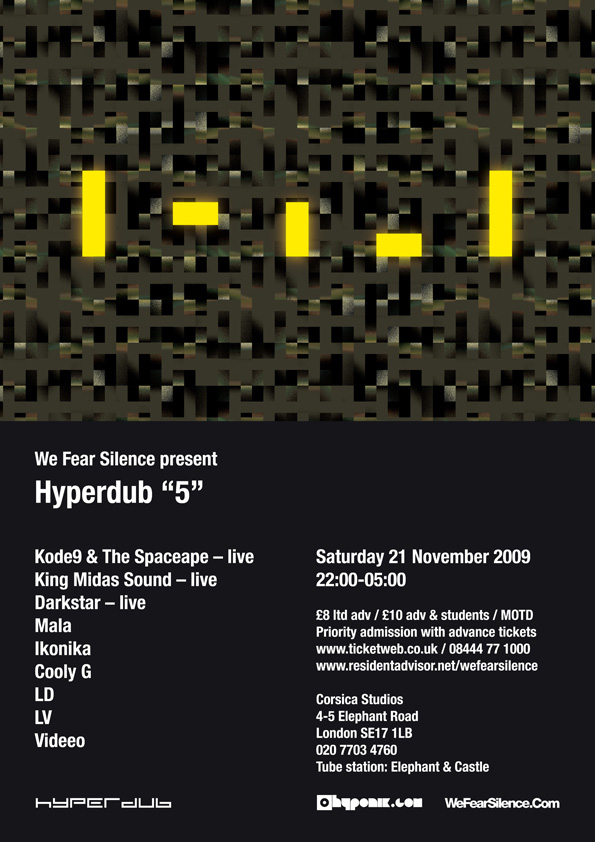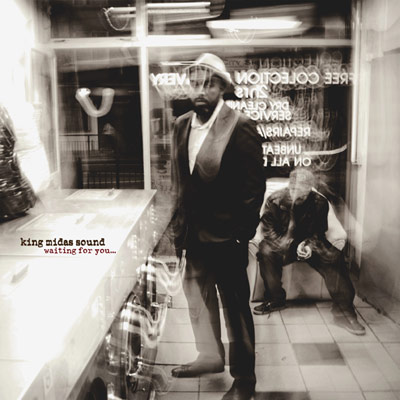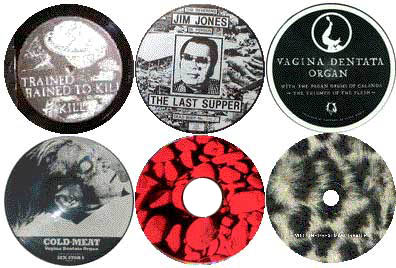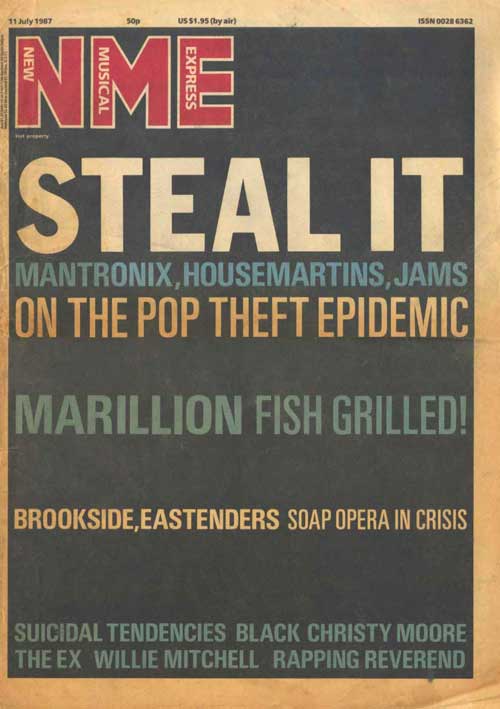Click here for a complete list of entries in the series “the first 23 gigs I can remember going to”.
Work work work work work.
I needed money to sustain my vinyl fetishism and fanzine habit, but I wasn’t after a career by any means. (In fact the only reason I have anything vaguely resembling a career today is because I’m lazy and just stick to doing what I know.)
There was an industrial temping agency about 20 minutes walk from my house so I signed on there. You had to turn up at 6 o’clock in the morning and they would dish out jobs to people they liked the look of. Then the lucky ones would pile in a couple of vans and head off to some grim industrial estate to sell their labour. If you were unlucky you’d got up at the crack of dawn for no reason at all, but at least you could go back to bed and doss about for the rest of the day.

... for industrial people
The work was basically the same wherever you went – moving heavy objects around, sweeping up or production line repetition. The only real variation was how much of a wanker the supervisor was. Bosses aside, the people were usually OK and took you under their wing. The ladies of the cheese factory were impressed by my polite manner and the guy who taught me how to clean out lathes at “Components and Linkages” said I should give him a call if I ever needed a steady job.
Some people are just shits though. I got sacked from a supermarket warehouse because I kept turning down overtime (“you’re no good to me if you don’t want to do seven ’til five”) and a couple of us got sacked from another warehouse by a jobsworth spotty middle manager because we’d swept the place clean twice over but hadn’t paid him due respect.
The maddest job was tarmac-ing people’s driveways. Four of us in a van – the boss was an old hand at charming housewives with the old “I’ve got a bit of spare tarmac missus, do you want your drive doing?” con. If he got a “yes” we’d get to work while he fucked off somewhere else for a cuppa or to drum up more business. I never mentioned to any of the good householders that their driveways didn’t need tarmacing because they were alreadyconcreted, or that we’d never done anything like it before and so the craftmanship might be a bit lacking… The police turned up a few times and we fobbed them off by acting dumb and saying that the boss had asked us to do x, y and z, so we were. Fortunately that only lasted a few days.
Usually the work was just dull and repetitive. I became increasingly reliant on the kindness and humour of others, or being able to enjoy my own company. The shittest job was rinsing valve casings in parafin. Put on rubber gloves, pick up two inch-square components, rinse in vat of parafin, put in a bucket. Repeat. For two weeks. Without anybody else nearby. I picked up my wages at the end of the week, reeking of parafin and social isolation. I had already organised and re-organised the list of records I was going to buy that weekend about a hundred times.
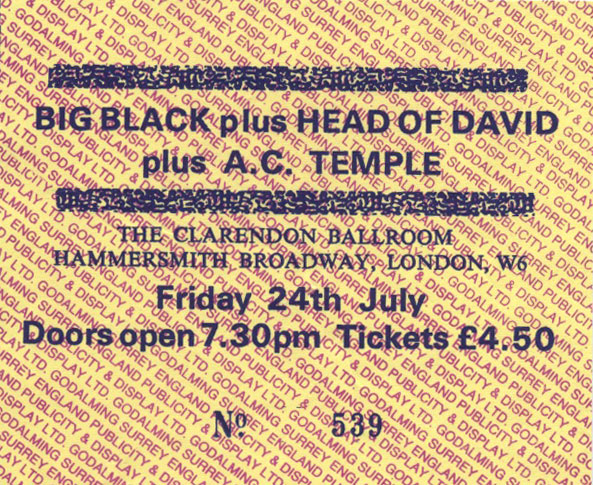
11. Big Black, Head of David, A.C. Temple. Friday 24th July 1987, Hammersmith Clarendon.
Peter drove us down to the Rough Trade Shop in Ladbroke Grove one sunny Saturday morning and we both picked up copies of Big Black’s limited edition “Headache” EP. It was rare, it came in a black vinyl sealed cover with brass embossing. It was on red vinyl. It had a really grim full colour photo of someone with their head caved in as the hidden inside cover. Essential purchase!
The music didn’t disappoint either – angular forceful bass guitar and thunderous drum machine, brittle screeching guitars. Brooding vocals. Tight as fuck. Oh, and they were playing live in a couple of weeks. Sorted.
Friday. Get wages, get home, get changed, get tea, get OUT.
Mmm the Clarendon. We zoomed down there in Peter’s knackered car – up and down the Westway, in and out the lights.
There was a nutter up the front shouting random stuff at Head of David, like “Jack Nicholson!”. (Actually it wasn’t that random, it turned out it was one of their songs). I met him two years later and we’ve been mates ever since. Head of David were good, but they were completely eclipsed by the headliners…
…”One, two, FUCK YOU!”
I hadn’t listened to much Big Black before the gig, just the EP and a Peel session. So the first time I heard tracks like “Kerosene” and “Fish Fry” was at the Clarendon, with sweat pouring of the ceiling and everyone in the place going mental. It was jaw-droppingly great, without question one of the most energetic gigs I have ever had the pleasure of attending.
Wire joined them for their cover of “Heartbeat” for the encore (which wasn’t all that, but I think everyone needed a breather anyway).
I added “Atomizer”, “Songs About Fucking” and everything else Big Black had ever done to my list of things to get at the earliest opportunity.
It turned out to be the group’s last ever gig. They just didn’t want to turn rubbish. Fair play.
It was recorded and released 5 years later as “Pig Pile”. Listening to the set again is great experience but it’s actually slightly tarnished my fuzzy memories of the event.

